Brewing Beer with Pale Malt
Published: July 19, 2025 at 10:02:46 PM UTC
Brewing beer with pale malt is a fundamental process in creating a wide range of beer styles. Pale malt serves as a versatile base malt, providing a foundation for various flavor profiles. Understanding the characteristics and uses of pale malt is essential for brewers. It contributes to the overall character of the beer, and its flavor profile can be tailored to suit different brewing techniques.
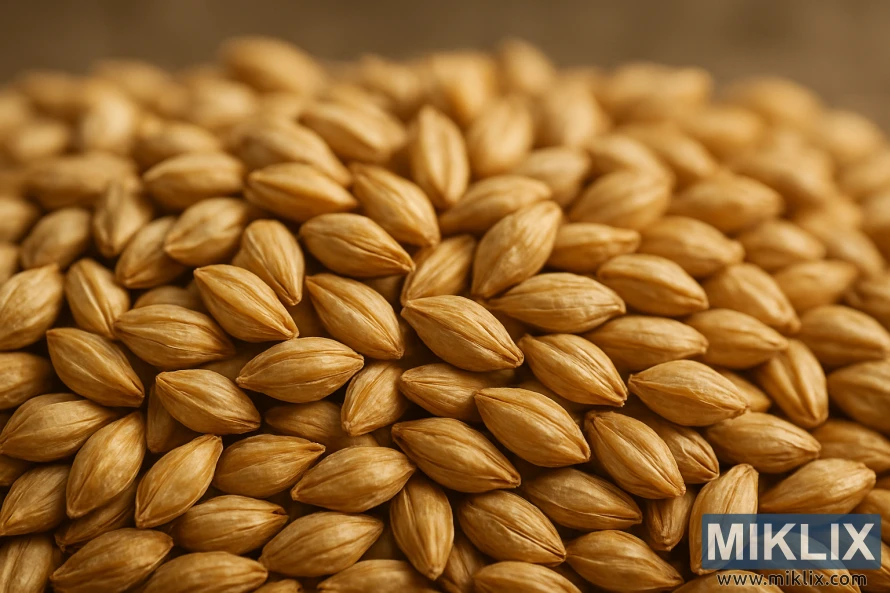
Key Takeaways
- Pale malt is a fundamental ingredient in many beer styles.
- It provides a versatile base for various flavor profiles.
- Understanding pale malt's characteristics is essential for brewers.
- Brewing techniques can be tailored to suit different beer styles.
- Pale malt contributes to the overall character of the beer.
Understanding Pale Malt: The Foundation of Modern Beer
Pale malt is at the core of modern beer making, serving as a versatile base malt. It enhances fermentability and character in beer. This type of malt is essential for most beers, thanks to its high enzymatic activity and ability to create fermentable wort.
The malting of barley is a key step in making pale malt. It involves soaking, germinating, and drying the grains. The drying process is critical, as it affects the malt's color and enzymatic power. For pale malt, drying is done at a low temperature to keep enzymes active and the color light.
Pale malt's characteristics make it perfect for a broad spectrum of beer styles. Its high diastatic power allows for efficient starch conversion into fermentable sugars during mashing. This leads to beers that are not just flavorful but also have the right alcohol content and body.
For brewers, grasping the role of pale malt is vital. It's used in everything from pale ales to lagers, and its quality greatly impacts the final beer. The malt's origin, production methods, and storage conditions all play a role in its brewing performance.
- Pale malt acts as a base that can be enhanced with specialty malts for unique flavors and colors.
- Its enzymatic properties are vital for the saccharification process during mashing.
- The quality of pale malt directly influences the overall character and quality of the beer.
By understanding pale malt and its role in brewing, brewers can appreciate the complexity of beer production. They also see the importance of choosing high-quality ingredients.
The Manufacturing Process of Quality Pale Malt
The production of pale malt is a detailed process, involving malting and kilning. These steps are essential for achieving the right flavor and color in beer. The malting process starts with soaking barley in water to rehydrate it. Then, germination occurs, where the barley sprouts. This stage is vital as it activates enzymes that convert the grain's starches into fermentable sugars.
Following germination, the kilning stage begins to halt the sprouting process. During kilning, the malt is dried to a precise moisture level. This not only stops the enzymatic activity but also enhances the malt's flavor and color. The temperature and duration of kilning are meticulously controlled to ensure the pale malt meets the desired standards.
The quality of pale malt heavily relies on the accuracy of malting and kilning. Proper malting ensures enzymes are fully activated. Precise kilning, on the other hand, ensures the malt reaches the perfect flavor and color without becoming too dark or developing off-flavors.
In conclusion, the production of quality pale malt is a complex blend of malting and kilning techniques. By mastering these processes, brewers can create high-quality pale malt. This malt serves as an excellent base for a wide range of beer styles.
Essential Characteristics of Pale Malt in Brewing
For brewers aiming to craft high-quality beers, understanding pale malt's characteristics is key. Known for its mild flavor and high enzymatic power, pale malt is a cornerstone in many recipes. It's a vital ingredient for achieving distinct flavor profiles in beer.
The flavor profile of pale malt is subtle, with a hint of sweetness. This mildness acts as a clean canvas for brewers to experiment with. By adding specialty malts and hops, brewers can create complex flavors in their beers.
Pale malt's enzymatic properties are also critical. Its high enzymatic power enables it to efficiently convert starches into fermentable sugars during mashing. This is essential for optimal fermentation, leading to the desired beer strength and flavor.
- Mild, slightly sweet flavor profile
- High enzymatic power for efficient starch conversion
- Versatility in brewing a wide range of beer styles
In summary, pale malt's characteristics are essential for brewers. Its mild flavor and high enzymatic properties offer brewers the flexibility to craft a wide variety of beers. From crisp lagers to complex ales, pale malt is indispensable in brewing.
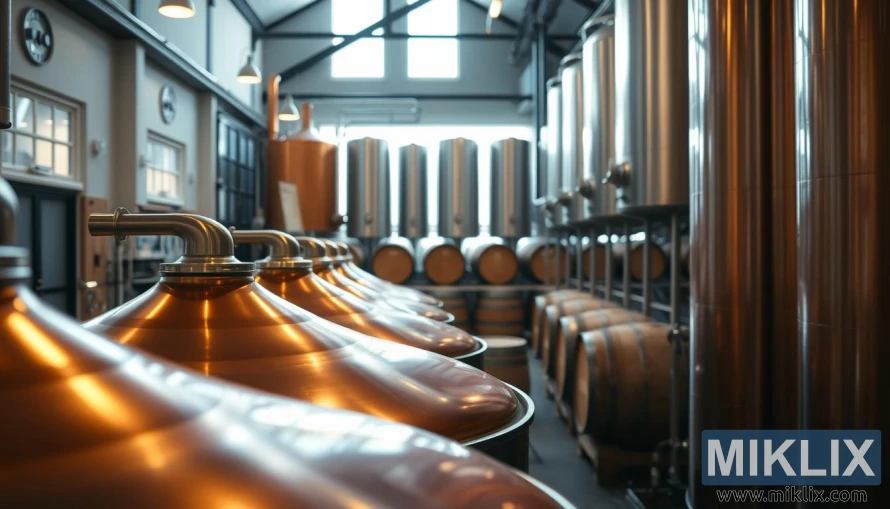
Different Types of Pale Malt Available
Pale malt comes in various forms, including two-row and six-row, each tailored for specific brewing needs. The main difference between these types is their enzymatic power, flavor, and brewing application.
Two-row pale malt is the go-to choice for brewers. It boasts balanced enzymatic power and flavor, making it suitable for a broad spectrum of beer styles. This malt offers a clean, neutral taste that lets other ingredients take center stage.
In contrast, six-row pale malt has a higher enzymatic power than two-row. It's favored in large commercial breweries for its unique brewing benefits. Six-row malt can impart a distinct flavor, appealing to brewers aiming for specific beer profiles.
Grasping the distinctions between two-row and six-row pale malt is vital for brewers aiming to craft their desired beers. Selecting the right pale malt type enables brewers to refine their brewing techniques. This leads to the creation of high-quality beers that fulfill their exacting standards.
How Pale Malt Influences Beer Styles
Pale malt is a cornerstone for many beer styles, shaping their taste and aroma. Its adaptability enables brewers to create a broad spectrum of beers, from refreshing pale ales to complex IPAs.
The flavor profile of pale malt is marked by its light color and subtle sweetness. This makes it perfect as a base for various beer styles. In brewing, it provides a clean, neutral background. This allows other ingredients to stand out.
In the case of IPA and pale ale, pale malt is key to their distinct flavors. For IPA, its enzymatic properties aid in creating a fermentable wort. This supports the beer's signature hoppy taste. In pale ale, it contributes to the beer's crisp, refreshing taste.
The impact of pale malt on beer styles can be seen in its characteristics. Here are some key ways it influences brewing:
- Pale malt offers a clean, neutral flavor, letting other ingredients take center stage.
- Its enzymatic properties facilitate fermentation, creating a fermentable wort.
- The light color of pale malt enhances the beer's appearance, ranging from pale gold to deep amber.
Understanding how pale malt shapes different beer styles helps brewers craft their recipes. Whether aiming for a hoppy IPA or a crisp pale ale, pale malt is essential in the brewing process.
Optimal Storage and Handling of Pale Malt
Pale malt is a key ingredient in brewing, needing careful storage and handling to keep its quality. The right storage conditions are vital to preserve the freshness and quality of pale malt.
For effective storage, pale malt should be kept in a cool, dry place. High temperatures and humidity can harm the malt, impacting its brewing performance. It's best to store pale malt at temperatures under 70°F (21°C) and humidity below 60%.
When handling pale malt, it's important to be careful to avoid damage and contamination. Using clean equipment is recommended to prevent contamination. Also, it's best to use pale malt within a reasonable time frame for the best brewing results.
- Store pale malt in airtight containers to maintain freshness.
- Keep the storage area clean and dry to prevent contamination.
- Monitor storage conditions regularly to ensure optimal environment.
By adhering to these guidelines, brewers can keep their pale malt in the best condition. This ensures the production of high-quality beers.
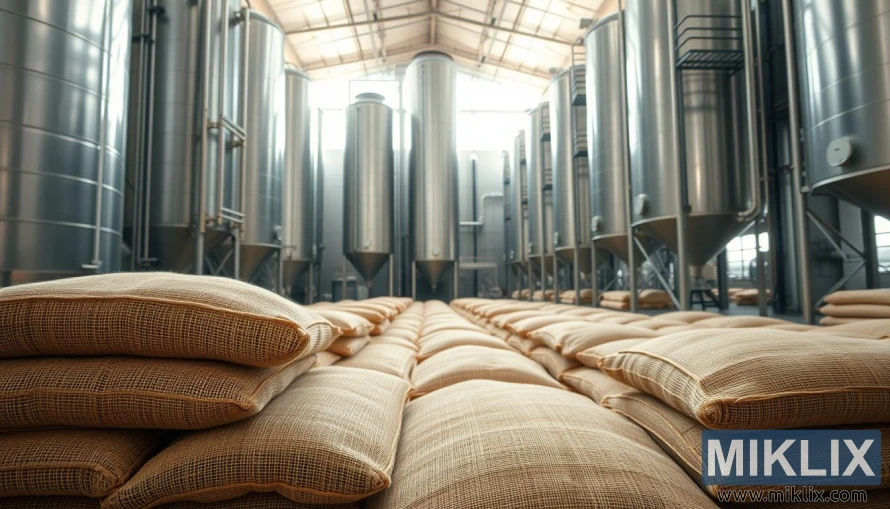
Mashing Techniques for Pale Malt
The art of mashing pale malt is a critical step in brewing, shaping the beer's flavor and character. Mashing involves soaking malt in hot water to extract fermentable sugars. Different techniques can be used to achieve the desired outcome.
There are mainly two mashing techniques for pale malt: single-step infusion and step mashing. Single-step infusion heats the water to a specific temperature and maintains it throughout. This method is straightforward and popular among brewers.
Step mashing, in contrast, involves temperature changes during the process. It allows brewers to activate different enzymes at various temperatures, leading to a more complex flavor. Yet, it requires precise temperature control and can be more challenging.
The choice between single-step infusion and step mashing depends on the brewer's goals and the pale malt's characteristics. Some prefer the simplicity of single-step infusion. Others value the flexibility and complexity of step mashing.
- Single-step infusion is ideal for brewers who want a straightforward mashing process.
- Step mashing is suitable for brewers who want to experiment with different flavor profiles.
- The type of pale malt used can influence the choice of mashing technique.
The mashing technique significantly impacts the beer's flavor and character. Understanding the advantages and disadvantages of each technique helps brewers make informed decisions. This leads to producing high-quality beers that showcase pale malt's full range.
Common Brewing Challenges with Pale Malt
Using pale malt in brewing comes with its own set of challenges, including modification issues. Modification is about how enzymes break down starches and proteins in malt during malting. Both over- and under-modification can cause brewing problems.
Over-modification happens when malt is over-processed, losing flavor and color. This results in a beer that tastes bland or lacks depth. Under-modification, on the other hand, occurs when malt isn't processed enough. It makes achieving the desired extract during brewing hard. It can also cause filtration issues and affect beer clarity.
To tackle these issues, brewers must closely watch the malting process for optimal modification. They need to check malt's moisture, temperature, and processing time. Adjusting mashing techniques can also help with malt modification problems.
Some common strategies for addressing these challenges include:
- Adjusting the mashing temperature to optimize enzyme activity.
- Using malt with a consistent modification level for predictable brewing performance.
- Monitoring the beer's flavor and clarity during brewing to catch issues early.
Understanding the challenges of pale malt and finding ways to overcome them is key to brewing quality beers. Whether making a crisp lager or a complex ale, mastering pale malt use is essential for success in the brewhouse.
Combining Pale Malt with Specialty Malts
Brewers often mix pale malt with specialty malts to create beers with rich, nuanced flavors. This blend allows for a wide range of taste experiences, from subtle malty notes to complex, hoppy profiles.
Specialty malts introduce unique characteristics to the beer. Caramel malts, for example, add sweetness and a rich, malty taste. Roasted malts, on the other hand, bring a deep, roasted flavor. By carefully choosing the right specialty malts and combining them with pale malt, brewers can craft beers with the exact flavor they envision.
- Caramel/Crystal Malts: These malts add sweetness and complexity to the beer.
- Roasted Malts: Roasted malts provide a deep, roasted flavor, often used in darker beers.
- Melanoidin Malt: This malt enhances the maltiness and adds a rich, complex flavor.
The ratio of pale malt to specialty malts is key. Typically, pale malt makes up 80-90% of the grain bill. Specialty malts are added in smaller amounts to achieve the desired flavor.
Blending pale malt with specialty malts is an art that requires experimentation and a deep understanding of malt interactions. By selecting and combining these ingredients with care, brewers can create beers with unique, complex flavors that distinguish them in the brewing world.
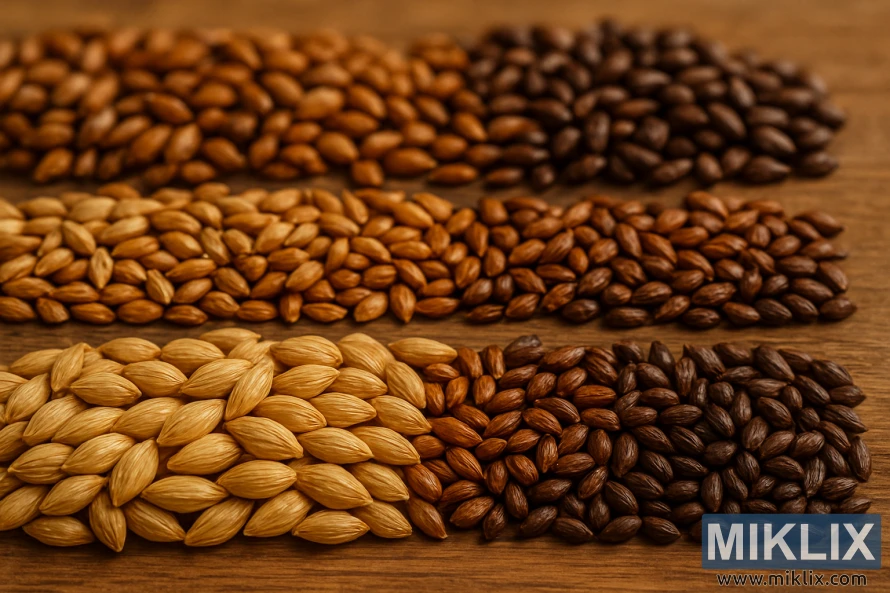
Recipe Development Using Pale Malt
Creating recipes with pale malt demands a grasp of its traits and its impact on the final brew. This versatile malt suits a broad spectrum of beer styles, from refreshing lagers to nuanced ales.
To craft beer recipes with pale malt, it's vital to grasp its flavor profile and its synergy with other ingredients. Here are some key tips for recipe development:
- Begin with a foundational recipe that highlights pale malt's clean, neutral taste.
- Explore various specialty malts to introduce complexity and depth to your brew.
- Think about the type of hops and yeast that will complement the pale malt's flavor.
Pale malt is ideal for crafting a range of beer styles, including pale ales, IPAs, and lagers. For instance, a pale ale recipe might include pale malt, wheat malt, and a mix of citrusy hops. Below is a simple pale ale recipe example:
- Use 70% pale malt as the base malt.
- Add 10% wheat malt to improve the beer's body and texture.
- Select a hop blend with citrusy and floral notes.
In summary, pale malt is a cornerstone in brewing, and mastering its use is essential for brewing top-notch beer recipes. By experimenting with diverse flavor profiles and brewing methods, brewers can craft unique and tasty beers that highlight pale malt's versatility.
Quality Assessment of Pale Malt
Evaluating pale malt quality is vital for consistent brewing. The quality of pale malt greatly affects the beer's flavor, aroma, and character.
When assessing pale malt, brewers should focus on several key factors. These include moisture content, extract capacity, and enzymatic activity. A top-notch pale malt should have a consistent flavor and enough diastatic power for starch conversion during mashing.
Here are some key characteristics to look for when evaluating pale malt:
- Moisture content: Ideally between 3-5%
- Extract capacity: Should be high for efficient brewing
- Enzymatic activity: Adequate diastatic power is key for starch conversion
- Flavor and aroma: Should be consistent and fitting for the beer style
By examining these traits, brewers can spot high-quality pale malt. This ensures a consistent and superior brewing process. Regular assessments and comparisons with historical data or supplier specs help maintain quality standards.
Assessing pale malt also involves looking at the supplier's quality control and certifications. Many malt suppliers follow strict quality standards. Knowing these can boost confidence in the malt's quality.
In summary, evaluating pale malt quality is a critical step in brewing. By carefully examining its characteristics and understanding its role in brewing, brewers can produce high-quality beer.
Sustainability in Pale Malt Production
The brewing industry's evolution highlights the growing need for sustainable pale malt production. Pale malt, a key ingredient in many beers, significantly impacts the environment. Brewers are now committed to reducing their ecological footprint, making sustainable pale malt production a vital step.
Several strategies are employed in sustainable pale malt production. These include using renewable energy, efficient water management, and waste reduction. Malting companies are integrating innovative technologies to lessen their environmental footprint without compromising quality.
The environmental advantages of sustainable pale malt production are vast:
- Renewable energy reduces carbon emissions
- Efficient water use and recycling
- Advanced processing minimizes waste
Further, sustainable pale malt production boosts the brewing industry's sustainability. Adopting eco-friendly practices enhances a brewery's reputation. It attracts environmentally aware consumers, too.
Key practices in sustainable pale malt production include:
- Energy-efficient malting processes
- Locally sourced barley to cut down on emissions
- Water-saving technologies
In summary, the move towards sustainable pale malt production benefits the environment and the brewing industry's future. By embracing sustainable practices, brewers can maintain a steady supply of quality pale malt while reducing their environmental impact.
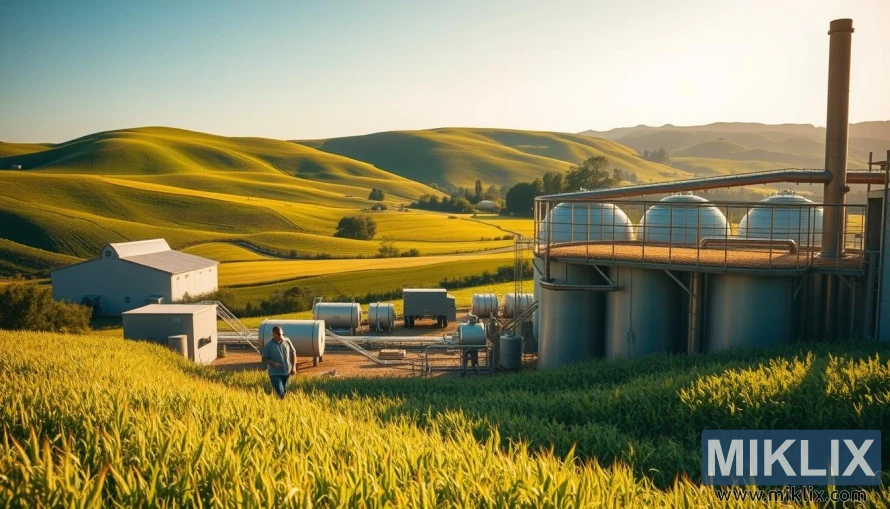
Economic Considerations for Brewers
Breweries face a delicate balance between quality and cost in pale malt production. Grasping the economic aspects is vital for brewers aiming to craft high-quality beer profitably. This balance is essential for maintaining a competitive edge in the brewing world.
The cost of pale malt is a significant expense for breweries. The quality of barley, the malting process, and transportation costs all influence the final price. Brewers must consider these factors against the benefits of using premium pale malt. High-quality malt can enhance beer flavor and character.
To manage pale malt costs effectively, brewers can adopt several strategies:
- Optimize mashing techniques to extract the maximum amount of fermentable sugars from pale malt.
- Negotiate with suppliers to secure the best possible price for high-quality pale malt.
- Invest in storage facilities that maintain the quality of pale malt over time, reducing waste and the need for frequent purchases.
By understanding the economic aspects of pale malt and implementing cost-effective strategies, brewers can enhance their profitability. This approach ensures quality beer without sacrificing the bottom line. Achieving this balance is critical for success in the competitive brewing industry.
Advanced Brewing Techniques with Pale Malt
Advanced brewing with pale malt opens up a world of possibilities for brewers. It's all about experimenting and innovating to create unique beers. Pale malt is key in this journey.
Pale malt's versatility makes it perfect for various brewing techniques. By adjusting the mashing temperature, brewers can change the beer's flavor. For instance, a higher temperature can make the beer sweeter and more complex. On the other hand, a lower temperature can result in a drier, crisper taste.
Some advanced brewing techniques that use pale malt include:
- Step mashing: a process that involves multiple mashing temperatures to create a complex flavor profile
- Decoction mashing: a traditional method that involves removing a portion of the mash, boiling it, and then returning it to the main mash to create a richer, more complex flavor
- Experimental hopping: using different hop varieties and hopping techniques to create unique flavor and aroma profiles
By combining pale malt with other ingredients and techniques, brewers can craft a wide range of beers. From crisp lagers to rich ales, the possibilities are endless. The only limit is the brewer's creativity.
In conclusion, pale malt is essential in advanced brewing, allowing for endless experimentation and innovation. By exploring new boundaries, brewers can create exciting beer styles that highlight pale malt's versatility.
Conclusion
Mastering pale malt is essential for improving your brewing skills and crafting a variety of high-quality beers. This article has delved into the characteristics, uses, and advantages of pale malt in brewing.
Understanding the manufacturing process, key characteristics, and types of pale malt available is key. Brewers can then make informed choices when picking the right pale malt for their recipes. Proper storage, handling, and mashing techniques are also critical for consistent results.
As you progress in your brewing journey, experimenting with pale malt and specialty malts can lead to innovative beer styles. By applying the knowledge from this article, you'll be well on your way to mastering pale malt. This will elevate your brewing to new heights.
Further Reading
If you enjoyed this post, you may also like these suggestions:
